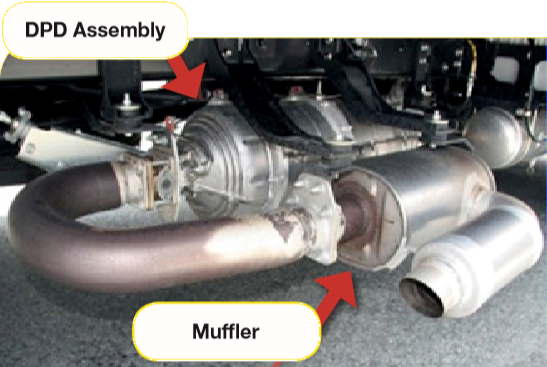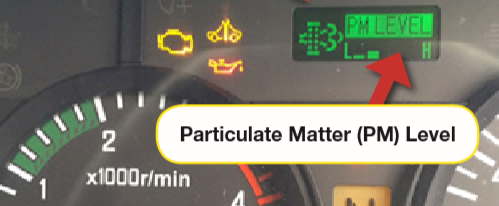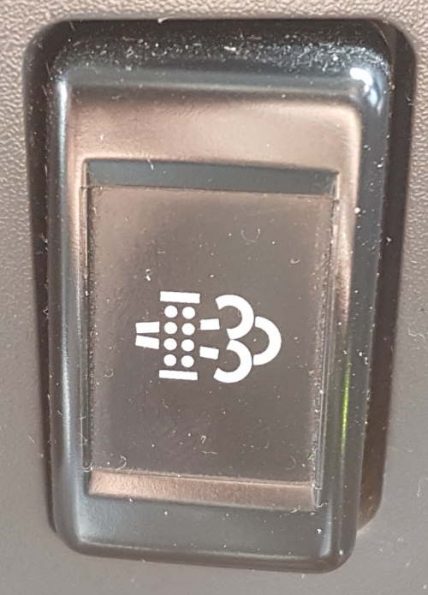DPD systems are a type of emissions control system common on newer trucks. They’re also called DPF (diesel particulate filter) systems. They are designed to remove diesel particular matter (soot) from the exhaust gas in a diesel engine.

The DPD system is part of the exhaust system. The DPD filter, also called a diffuser, is similar to a catalytic converter which you’ll find on almost all car exhausts. Its honeycomb metal construction traps harmful emissions.
As it is trapping the diesel particulates, eventually it gets full. The system measures the pressure difference between the inlet and outlet of the filter. As the system becomes more clogged, the pressure increases. Eventually, when the filter ‘full’ (or at a preset mileage) the system will request a DPD regeneration or DPD burn (unless it’s a single use filter, in which case it must be replaced). This process adds more fuel and turns the exhaust brake on to increase the back pressure to increase the heat in the DPD filter to burn out the trapped particles.
Some vehicles’ dashboards display a particular matter meter which shows how full the DPD system is. As the meter fills, time to DPD regeneration is reduced.

If there’s no meter, an orange warning light might display.

DPF burns are only effective a certain number of times. Eventually, the filter will become blocked and will need to be manually removed and cleaned, or replaced entirely. If the vehicle has had excessive low-speed usage, the filter is more likely to need replacing as the burn cycle is only effective at open road speeds where more heat can be generated. Blockages can also be caused when a service agent doesn’t use the correct low-ash engine oil (10W-40 rating).
How do you do a DPD regeneration?
There are two ways a DPD regeneration happens:
- Auto: a burn happens automatically while the truck is in normal operation. There may be a green light on the dashboard indicating that it’s happening. Idle revs may increase. It’s important that the driver doesn’t stop while this process is happening.
- Manual: the system requests the filter be removed and cleaned. An orange light will display on the dashboard. The driver needs to activate a regeneration by pushing the DPD button. Check in the owner’s manual for the exact process. If the driver forgets to do this (or ignores the warnings) this can cause damage to the filter meaning it needs to be completely replaced.
When an immediate manual regeneration is requested the orange DPD warning light begins to flash. A slow pulse means that a manual regeneration is required within 50km. A fast pulse usually means the vehicle is about to enter ‘limp mode’ and may require a technician to fix it. To manually active the DPF:

- Pull over in a safe place
- Make sure the surroundings are non-flammable, i.e. don’t park on long dry grass as the process can heat the exhaust to 800°C
- Ensure the transmission is in neutral and the handbrake is on
- Press the DPD or DPF button. The light should stop flashing and will stay on continually
- The engine idle will increase while the burn is happening. This could take up to 20 minutes. Don’t shut down the vehicle or leave it unattended
- Once the DPD light turns green or goes out and idle has returned to normal, the burn is complete.
Don’t run the DPD burn when it’s not required as this means the oil will need to be replaced sooner.
